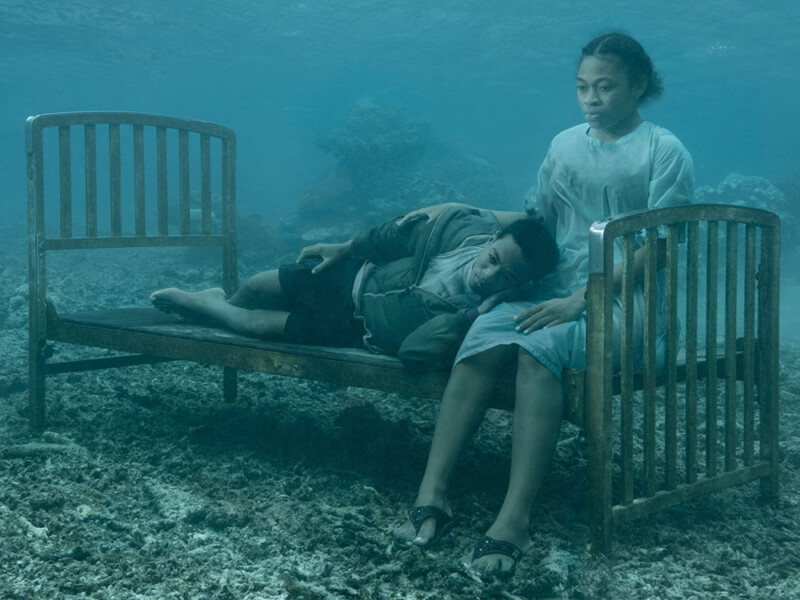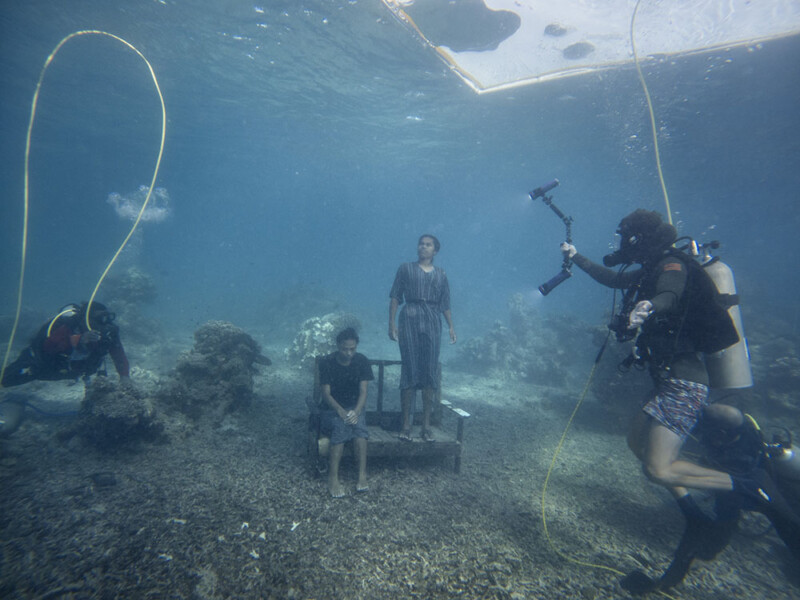Powerful Portraits of People Living in Areas Threatened by Rising Sea Levels
![]()
Photographer Nick Brandt is engaged in a series of projects focusing on climate change with his latest installment looking at the rise in sea levels.
Entitled SINK / RISE, Brandt traveled to Savusavu on the island of Vanua Levu in Fiji where inhabitants are acutely threatened by rising sea waters.
To capture this, Brandt pulled off a powerful photo shoot showing actual residents of the local area sitting pensively while submerged in water.
“Many islands of the South Pacific are especially vulnerable to sea level rise,” Brandt tells PetaPixel. “Many are barely a few meters above sea level, and so in time will disappear entirely.”
![]()
![]()
![]()
The British photographer says the people in the photos “live close enough to the ocean that they would lose their homes.”
“Serafina and Keanan, for example, currently live just a few meters from the shoreline, and, considering how young they are, if they stay where they are, will be among those affected,” he adds.

A Difficult Shoot
Brandt spent several months planning the shoot from his home in California working out the logistics of the shoot: understanding how to keep the models stable and weighted while underwater. But, the best-laid plans go awry and Brandt hadn’t factored in the power of tidal surges.
“It was week after week of terrible visibility,” says Brandt. “I chose to shoot in April and May: in theory, after the rainy season, but before the water got too cold in the Southern Hemisphere winter.”
But this is not how it played out, after he arrived the water’s visibility got worse and worse.
“There was one period in May where the visibility was so bad that we were unable to shoot for nine long, expensive days. An unseasonably massive torrential storm generated a huge amount of muddy freshwater runoff from the island’s rivers,” Brandt says.
“The ocean water just got greener and greener until it looked like we were swimming in a fetid stagnant pond in the middle of a jungle. Totally un-shootable.”

![]()
Brandt was shooting on a medium format camera, the underwater housing for which was the “cost of a new car.” He had with him a crew of around 10 people helping to operate the lighting system which included a four by four-meter [13 by 13 feet] square silk frame floating on the surface to block out sunlight so the underwater flashlight worked better.
![]()
![]()
Brandt is an experienced scuba driver so had no problems being beneath the waves but, of course, he was connected to an oxygen supply whereas the models had to hold their breath for the photos; a divemaster was on hand to ensure everyone’s safety.
He tells CNN that initially they could only hold their breath for about 15 seconds before needing oxygen, and it took 30 minutes to set up each shot. By the end of the six-week shoot, the models could hold their breath for “well over a minute” and the crew could get the shot set up in only a minute or two.
“They were amazing. The cast was so engaged, so much part of it, that even when we’d finished photographing them, and they could just chill out and be back on the boat and chatting, they would just basically dive back in the water to help,” he says.
![]()
Fiji, home to nearly one million people, is on the frontline of climate change with Fijian officials calling climate change the biggest security threat to the region — they are asking the global community for help.
In August, the U.N. meteorological agency said that sea levels are rising faster in the South-West Pacific than the global average and low-lying islands, such as Vanua Levu, are endangered.
PetaPixel previosuly covered another of Brandt’s climate change project entiteld The Day May Break where he took portraits of people and animals that have been impacted by environmental degradation and destruction.
More of Brandt’s work can be found on his Instagram and website.
Image credits: All photos courtesy of Nick Brandt.
Update 12/4: The size of the square silk frame was changed to reflect its actual size.